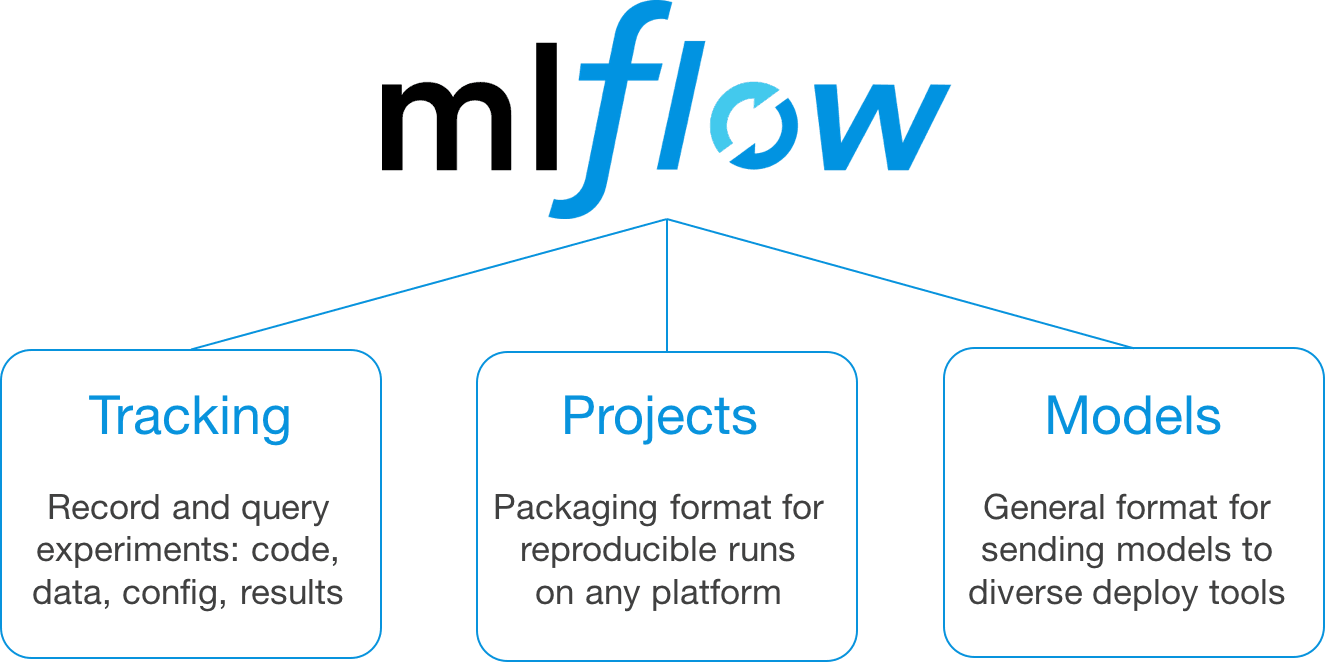
When to use MLFlow
• September 22, 2023
If you're deep into your machine learning journey, you've probably heard about tools like MLFlow and TensorBoard. These tools offer a more organized way to track, manage, and collaborate on your machine learning experiments.
Table of Contents
- Introduction: The Need for MLFlow in Machine Learning Projects
- What is MLFlow?
- Benefits of Using MLFlow
- 3.1 Model Versioning
- 3.2 Experiment Tracking
- 3.3 Collaboration
- Scenarios to Use MLFlow
- 4.1 Individual Hobbyists
- 4.2 Small Teams
- 4.3 Enterprise Scale
- Comparing MLFlow with TensorBoard
- Getting Started with MLFlow
- Conclusion
1. Introduction: The Need for MLFlow in Machine Learning Projects
If you're deep into your machine learning journey, you've probably heard about tools like MLFlow and TensorBoard. These tools offer a more organized way to track, manage, and collaborate on your machine learning experiments. Today, we'll delve into when and why you should consider incorporating MLFlow into your workflow.
When I started my first serious machine learning project, it seemed like simple logging techniques were more than sufficient for keeping track of model performance. However, as the complexity and scale of my experiments grew, so did the need for a more robust tracking system. I found that MLFlow fit the bill, and perhaps it could be a useful addition to your toolset as well.
2. What is MLFlow?
MLFlow is an open-source platform designed to manage the entire machine learning lifecycle. It includes tools for tracking experiments, packaging code into reproducible runs, and sharing and deploying models. It was developed to work with any machine learning library and integrates well with various data sources and platforms including AWS.
3. Benefits of Using MLFlow
3.1 Model Versioning
Version control isn't just for code; it's equally important for machine learning models. With MLFlow, you can easily track different versions of your model, compare their performances, and roll back to previous versions when needed.
3.2 Experiment Tracking
Keeping a record of different experiments, hyperparameters, and their results can be cumbersome. MLFlow streamlines this process by providing a centralized tracking mechanism, making it easier to compare and analyze different runs.
3.3 Collaboration
Collaboration becomes smoother with MLFlow. It enables team members to share experiment results and datasets, allowing for a unified and streamlined workflow.
4. Scenarios to Use MLFlow
4.1 Individual Hobbyists
For those working on small-scale projects or individual experiments, using MLFlow might seem like overkill. However, even at this level, the tool can offer value. Specifically, it can help you maintain a clear log of your experiments, making it easier to pick up where you left off or share your work with others.
4.2 Small Teams
Small teams can gain significantly from MLFlow. It enables easy collaboration and keeps everyone on the same page, thereby reducing duplication of effort and promoting effective communication.
4.3 Enterprise Scale
At an enterprise level, MLFlow shines the brightest. The robustness it provides in terms of tracking, sharing, and deploying models is unparalleled, making it an essential tool for any large-scale machine learning project.
5. Comparing MLFlow with TensorBoard
While TensorBoard is great for real-time visualization of neural network training, MLFlow offers a more general-purpose approach. It is designed to work across various machine learning libraries, making it versatile and adaptable for different project needs. The choice between the two would depend on the specific requirements of your project.
6. Getting Started with MLFlow
If you've decided that MLFlow is the tool for you, getting started is quite straightforward. Installation is as simple as running pip install mlflow, and a host of tutorials and documentation are available to help you make the most out of the platform.
7. Conclusion
Even if you're working on smaller, individual experiments, MLFlow can offer value in terms of organization and future scalability. As you move into more complex and collaborative projects, the advantages of using MLFlow become even more apparent. Trust me, it’s worth the effort to integrate MLFlow into your machine learning workflow. Give it a try, and you'll likely find your projects more manageable, organized, and successful.
Happy coding!